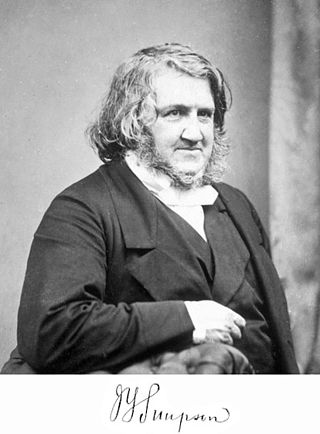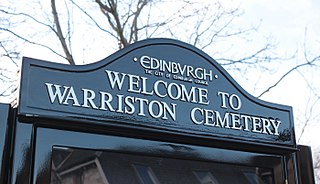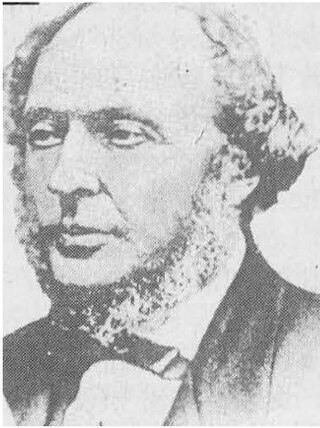Contents
| |||||
| Centuries: | |||||
|---|---|---|---|---|---|
| Decades: | |||||
| See also: | List of years in Scotland Timeline of Scottish history 1847 in: The UK • Wales • Elsewhere | ||||
Events from the year 1847 in Scotland .
| |||||
| Centuries: | |||||
|---|---|---|---|---|---|
| Decades: | |||||
| See also: | List of years in Scotland Timeline of Scottish history 1847 in: The UK • Wales • Elsewhere | ||||
Events from the year 1847 in Scotland .
1847 (MDCCCXLVII) was a common year starting on Friday of the Gregorian calendar and a common year starting on Wednesday of the Julian calendar, the 1847th year of the Common Era (CE) and Anno Domini (AD) designations, the 847th year of the 2nd millennium, the 47th year of the 19th century, and the 8th year of the 1840s decade. As of the start of 1847, the Gregorian calendar was 12 days ahead of the Julian calendar, which remained in localized use until 1923.

Sir James Young Simpson, 1st Baronet,, was a Scottish obstetrician and a significant figure in the history of medicine. He was the first physician to demonstrate the anaesthetic properties of chloroform on humans and helped to popularise its use in medicine.
The Bannatyne Club, named in honour of George Bannatyne and his famous anthology of Scots literature the Bannatyne Manuscript, was a text publication society founded by Sir Walter Scott to print rare works of Scottish interest, whether in history, poetry, or general literature. The club was established in 1823 and printed 116 volumes before being dissolved in 1861.

Clan Primrose is a Lowland Scottish clan.
Events from the year 1847 in the United Kingdom.

Warriston Cemetery is a cemetery in Edinburgh. It lies in Warriston, one of the northern suburbs of Edinburgh, Scotland. It was built by the then newly-formed Edinburgh Cemetery Company, and occupies around 14 acres (5.7 ha) of land on a slightly sloping site. It contains many tens of thousands of graves, including notable Victorian and Edwardian figures, the most eminent being the physician Sir James Young Simpson.

Eve Blantyre Simpson, sometimes credited as Evelyn Blanytre Simpson, Eva Blantyre Simpson, or E. Blantyre Simpson, was a Scottish writer, author of biographies, short stories, a book about dogs, and a book on the folklore of lowland Scotland.
Events from the year 1814 in Scotland.
Events from the year 1815 in Scotland.
Events from the year 1840 in Scotland.
Events from the year 1835 in Scotland.
Events from the year 1828 in Scotland.
Events from the year 1823 in Scotland.
Events from the year 1809 in Scotland.
Events from the year 1780 in Scotland.

Events from the year 1685 in the Kingdom of Scotland.
Robert Halliday Gunning FRSE PRPSE FSA LLD was a Scottish surgeon, entrepreneur and philanthropist. He did much to improve social conditions in Brazil and also became rich there. He endowed numerous prizes and awards including the Gunning Victoria Jubilee Prizes. The University of Edinburgh provides scholarships under the title of Gunning Victoria Jubilee Bursaries. He was a close friend of both Thomas Chalmers and Robert Christison.

Robert Traill of Greyfriars was born at Denino, in 1603. He was son of Colonel James Traill, of Killcleary, Ireland, Gentleman of the Privy Chamber to Henry, Prince of Wales, and grandson of the Laird of Blebo, and Matilda Melvill of Carnbee. He graduated with an M.A. from St Andrews on 21 July 1621. he went over to Paris, and subsequently joined his brother in Orleans. He later studied at the Protestant College of Saumur. He was an English tutor in France to the sister of the Duke of Rohan in 1628. He was afterwards teacher in a school established by a Protestant minister at Montague, in Bus Poitou. He became chaplain to Archibald, Marquess of Argyll. In 1630 he returned to Scotland.

William Flockhart, L.R.C.S.E. was a Scottish chemist, a pharmacist who provided chloroform to Doctor James Young Simpson for his anaesthesia experiment at 52 Queen Street, Edinburgh on 4 November 1847. This was the first use of this chemical on humans when Simpson tried it on himself and a few friends, and then used it for pain relief in obstetrics, and surgery. This changed medical practice for over a century, according to the British Medical Journal.